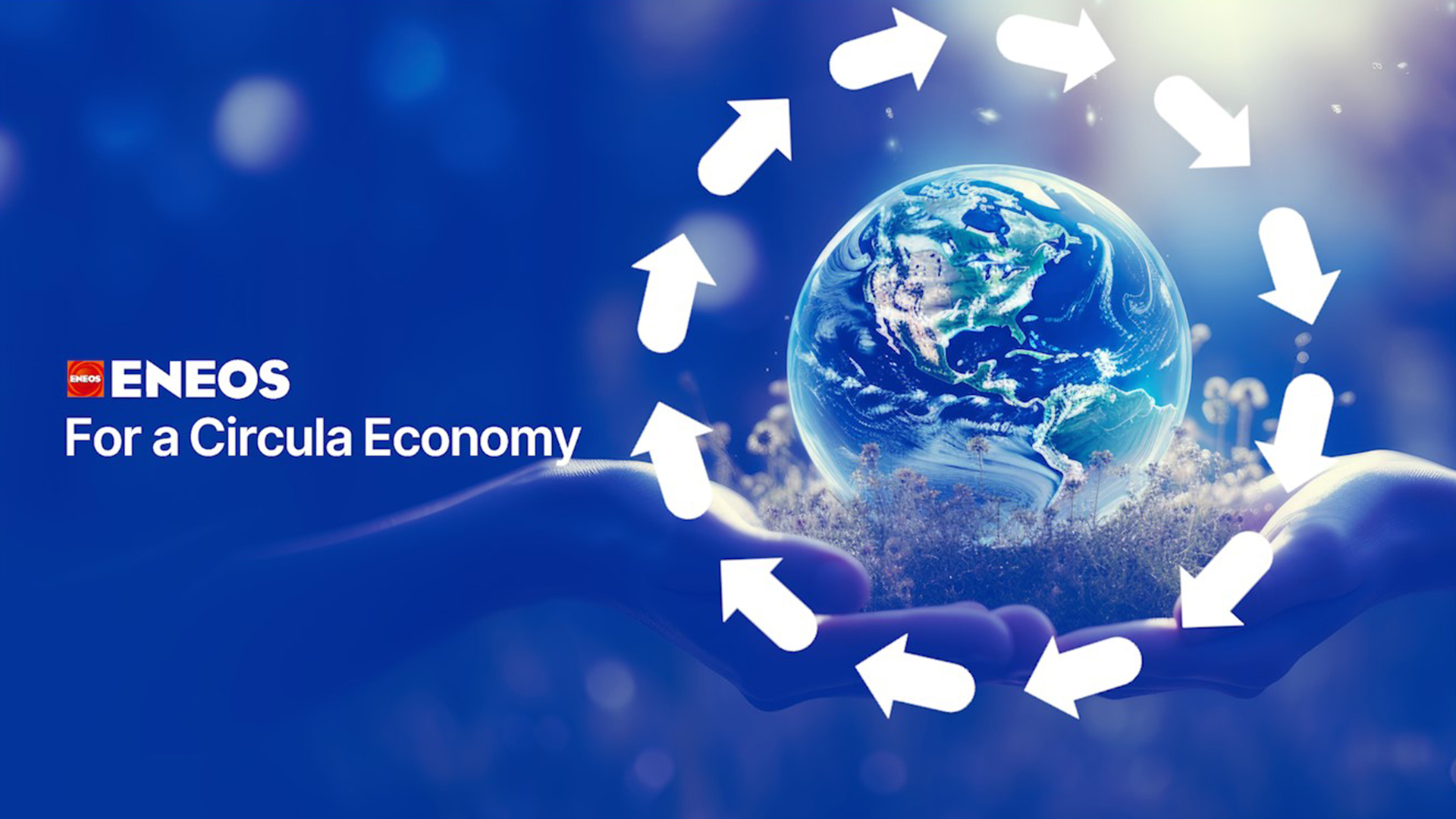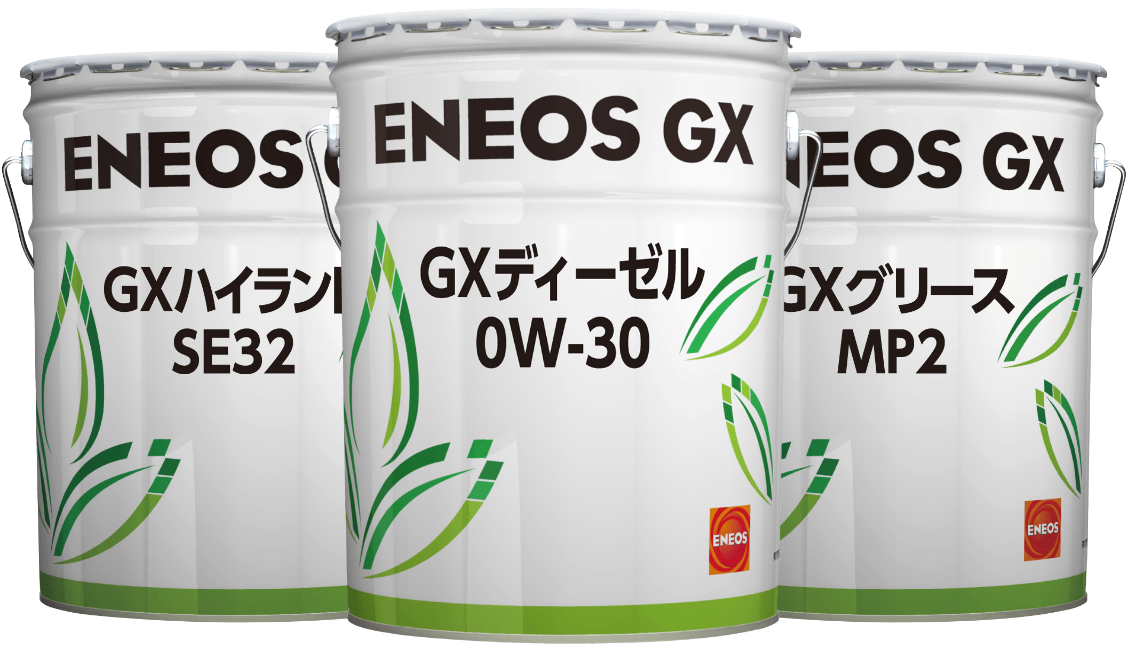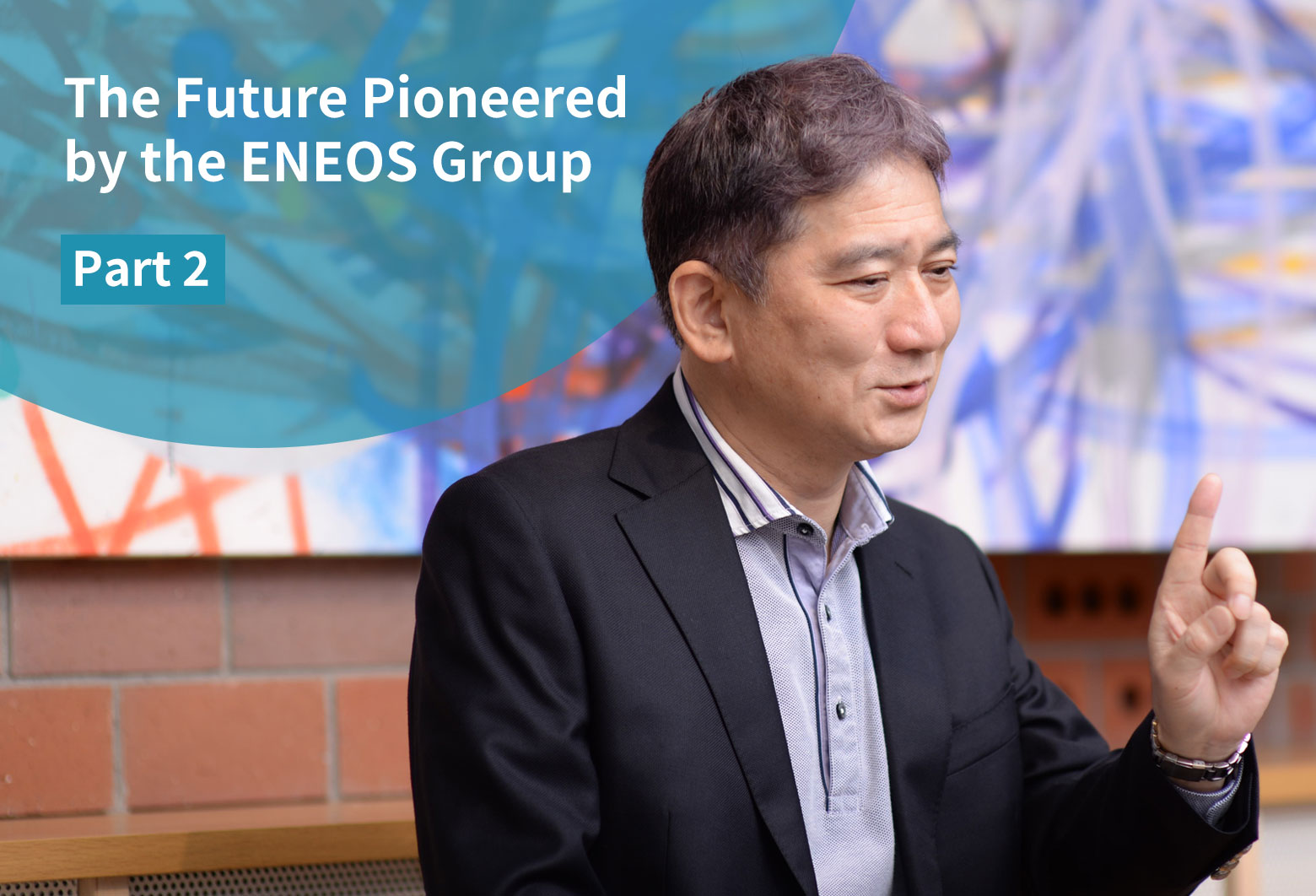The Future Pioneered by the ENEOS Group: Technological Development and Corporate Strategies to Achieve Carbon Neutrality
- Energy transition
- Technological Development
- Renewable energy
- Biomass
- Bioethanol
- CCS
- Hydrogen
- ENEOS Renewable Energy
- ENEOS Power
- ENEOS Xplora
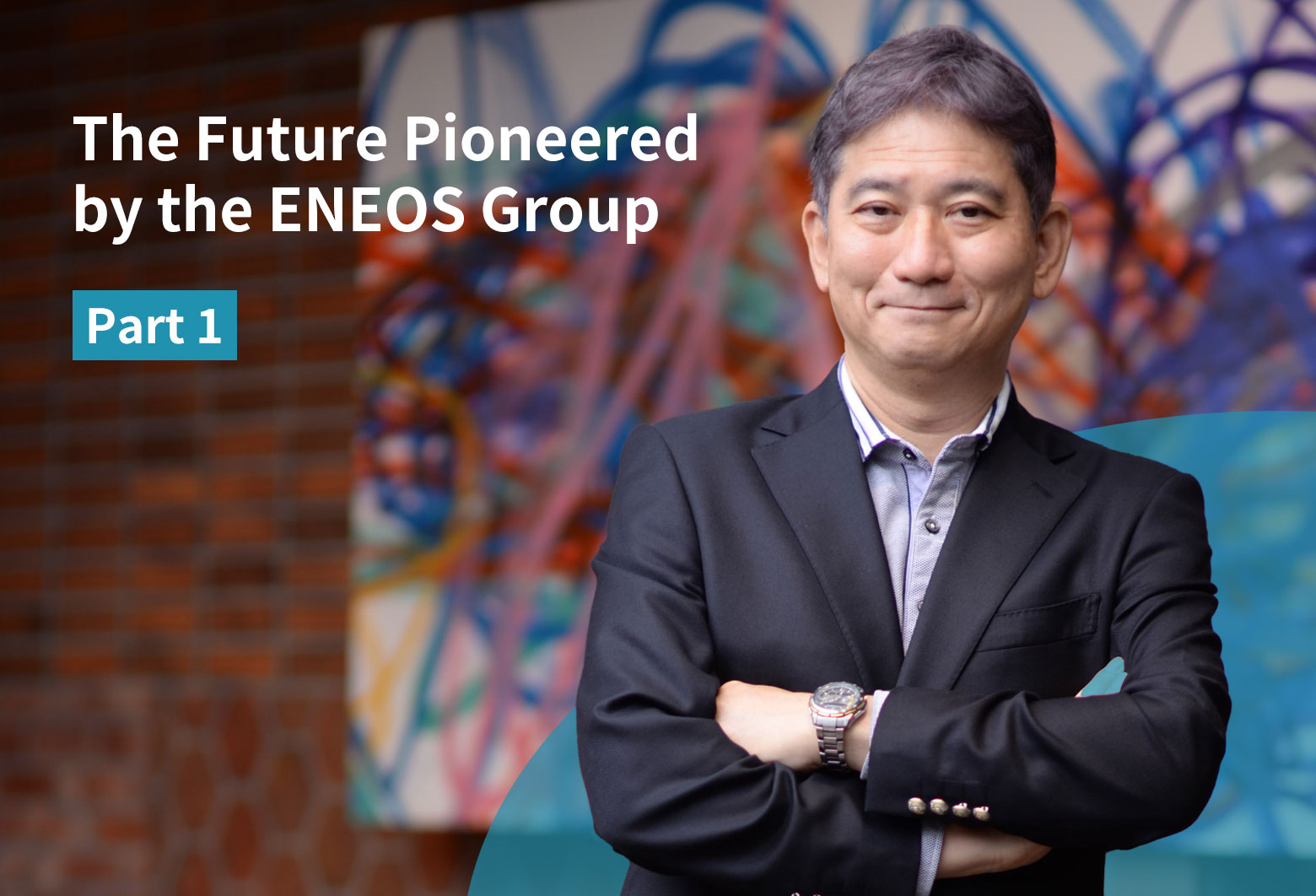
The ENEOS Group, as a leader in the energy and materials industry, aims to achieve a carbon-neutral society by 2050 while utilizing renewable energy, biomass, and carbon dioxide capture and storage (CCS). In this three-part series, we asked Fujiyama Yuichiro, CTO of ENEOS Holdings, what kind of technological development and strategies the Group is pursuing to achieve this goal. The Part 3 of this series will also delve into the development and innovation capabilities of the Group. This is an easy-to-understand introduction to the challenges that the Group is taking on toward the energy society of the future.
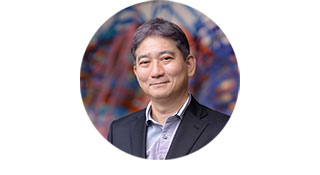
Senior Vice President, CTO
ENEOS Holdings, Inc.
Energy transition options are limited.
We will do our best with renewable energy, biomass, CCS as our main focus.
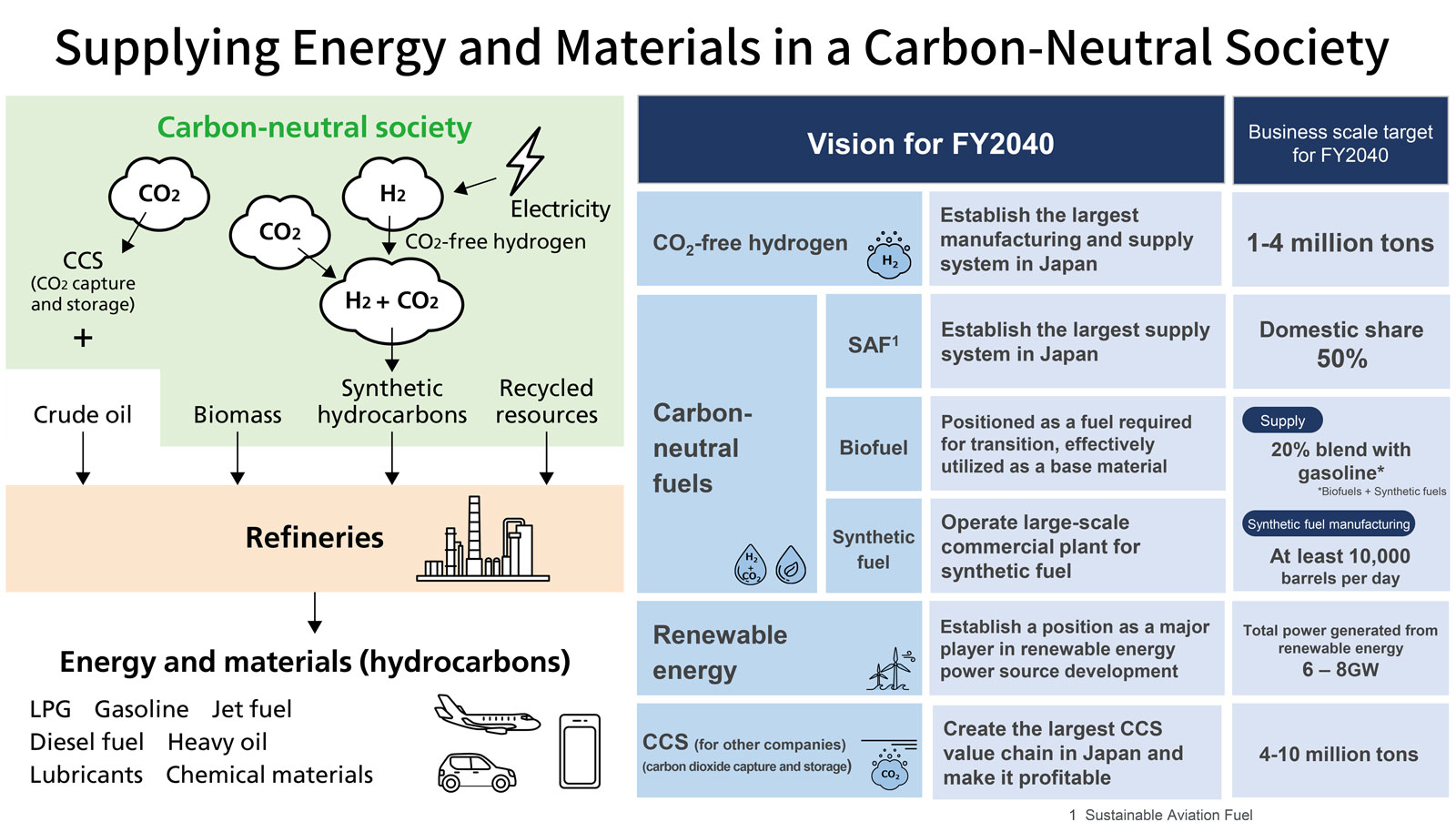
—As a leader in the energy and materials industry, what is the ENEOS Group’s vision for achieving a carbon-neutral society?
Fujiyama: The ENEOS Group aims to achieve carbon neutrality by 2040 for its own emissions (Scope 1 and 2) and by 2050 for its indirect emissions (Scope 3) (Note 1). As a supplier of energy and materials, we need to achieve carbon neutrality by reducing greenhouse gas emissions while maintaining a stable supply of energy and materials. To do this, we’re now in the process of making the energy transition (Note 2) from fossil-based energy to next-generation energy.
—Achieving both the stable supply of energy and materials and a carbon-neutral society seems to be a lofty goal. What measures is the ENEOS Group considering to achieve this?
Fujiyama: Most of the energy and materials we use today are hydrocarbons, which are made by combining carbon and hydrogen. Although the term “decarbonization” is often used, it’s difficult to imagine that carbon will be completely eliminated from our carbon-rich society. Even in a carbon-neutral society in 2050, we believe that man-made hydrocarbons will be used in some form or another. We must continue to supply these hydrocarbons in a way that emits as little greenhouse gas as possible. The key to this is our cutting-edge technology.
We’re developing various technologies to reduce greenhouse gas emissions, improve energy efficiency, and provide environmentally friendly energy and materials. The Japanese government’s 2050 Carbon Neutral Declaration set a goal date and brought forward the plan, and there have been various other variables such as politics, the economy, and changes in global conditions. Even under these circumstances, we believe it’s important to steadily advance development without wavering.
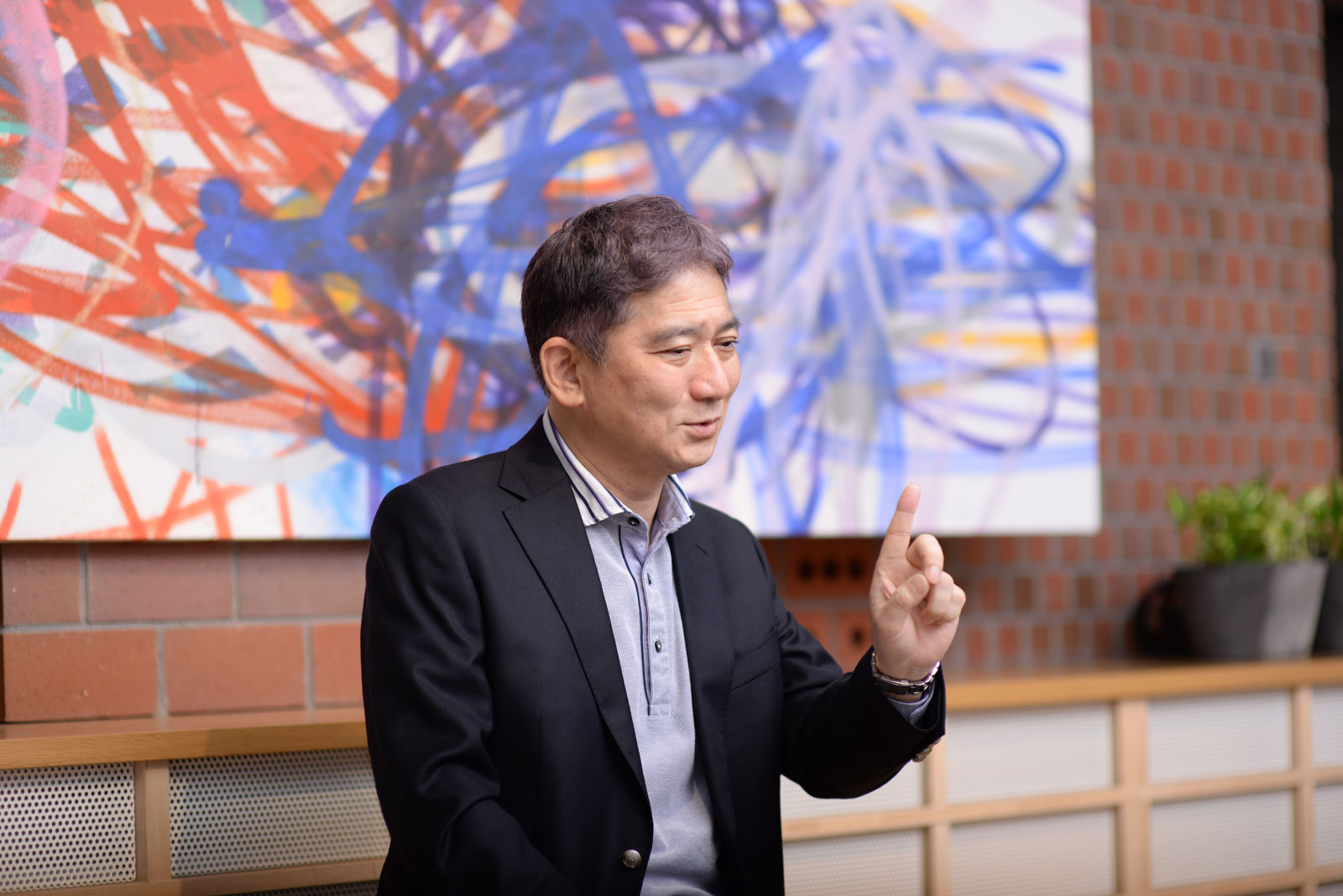
—Can you tell us about the ENEOS Group’s specific technological strategy?
Fujiyama: There aren’t a hundred or two hundred ways to achieve an energy transition. This may seem surprising, but there’re currently only three major options available to us. These are renewable energy, biomass, and CCS (see figure below). The ENEOS Group is currently accelerating its efforts in these three areas.
ENEOS Renewable Energy is involved in renewable energy-based power generation. The company aims to establish a solid position in Japan as an operator of businesses such as solar power, onshore wind power, and offshore wind power generation. ENEOS Power, which procures and sells electricity, is also developing technologies to efficiently deliver renewable energy-based electricity to customers by effective uses of power generation equipment and storage batteries.
When using biomass, which consists of biological resources such as plants and animals, as energy, it’s important to make good use of inedible raw materials. For example, bioethanol is produced by decomposing biomass using microorganisms. Most bioethanol produced around the world is made from food such as corn and sugarcane, and some have questioned whether energy policy should be prioritized at a time when hunger and malnutrition are considered social issues. Therefore, ENEOS is working to develop bioethanol production technology using inedible cellulose-based raw materials such as wood and grass. Since two-thirds of Japan is covered by forests, we should take advantage of these resources.
CCS, on the other hand, is a technology for collecting CO₂ emitted into the atmosphere and burying it underground. JX Nippon Oil & Gas Exploration is working on CCS. The company has already achieved CO₂ capture and effective utilization called enhanced oil recovery (EOR) using CCS in the United States, which is a leading country in CCS, and is now a world leader in this area.

—So the challenge is how to best use technology in the three areas of renewable energy, biomass, and CCS.
Fujiyama: Yes, exactly. Of these, renewable energy will be the mainstay of the basic energy strategy. However, there’re many entrants into the renewable energy business from other industries and venture businesses, and it was expected to become a highly competitive red ocean market. Therefore, the ENEOS Group has been working for years to develop time and space-shifting technologies to efficiently use renewable energy.
Balancing, which matches the amount of electricity generated with the amount of electricity used, is required to maintain a stable supply of electricity in the power system. The current mainstream practice is to adjust the amount of electricity generated to match the demand. This is done primarily with thermal power generation. However, with renewable energy, where the amount of electricity generated is largely dependent on weather conditions and wind levels, it’s difficult to regulate. Consequently, we’re in a situation where there’s a surplus of electricity during the daytime, when more electricity is being generated by renewable energy.
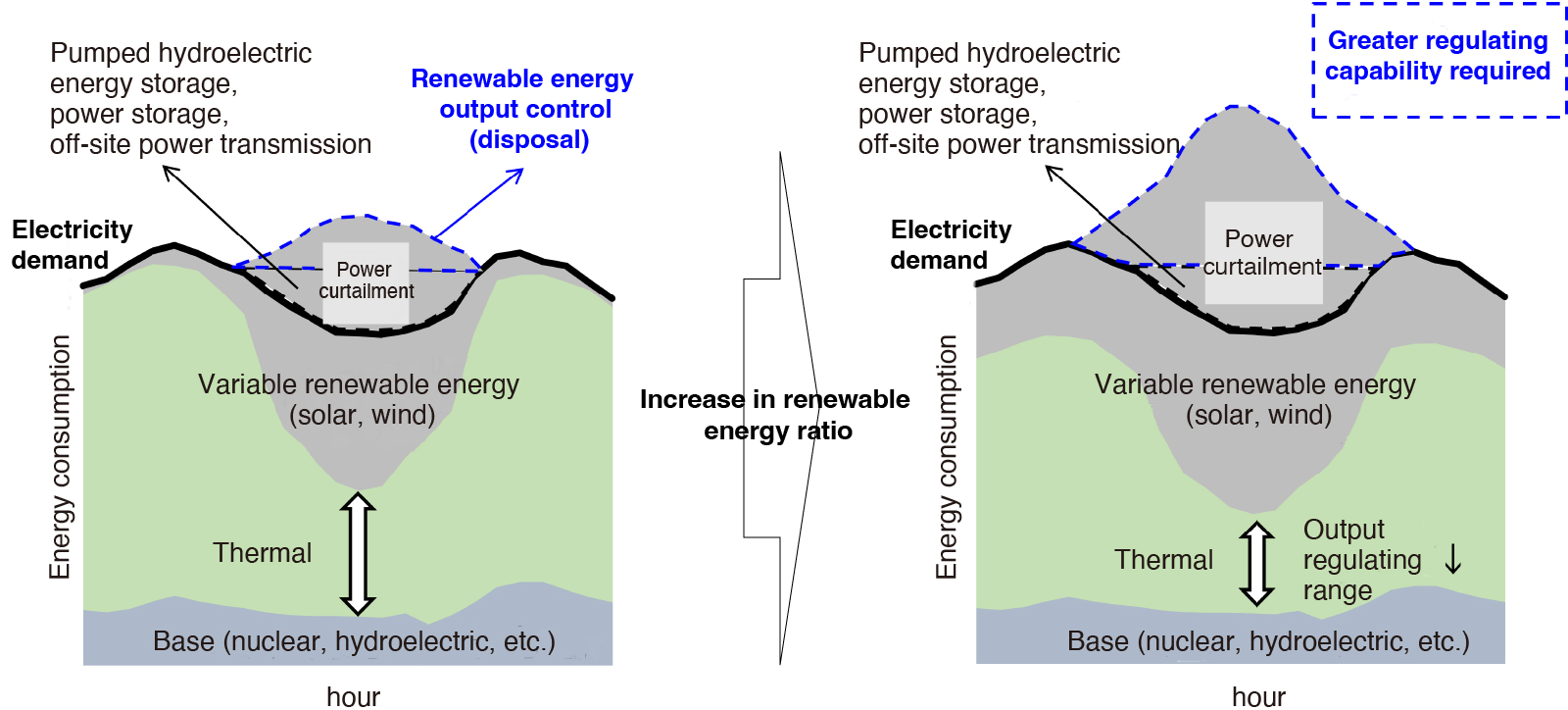
—That’d be a waste. What measures are being taken to address the mismatch between demand and supply caused by the increase in renewable energy-based power generation?
Fujiyama: Energy storage technology is needed to eliminate such waste and ensure a stable supply of electricity. Batteries are typical examples of this technology. However, while batteries are effective for short periods of time, it becomes increasingly challenging when they must be used for long periods of time or transported in large quantities.
That is where hydrogen comes into the spotlight. Electricity cannot be stored as it is, but when the electricity is transformed into hydrogen by water electrolysis, it can be stored and transported much more easily. Japan was one of the first countries to start focusing on this. In 2017, the Japanese government formulated the Basic Hydrogen Strategy (Note 3) ahead of the rest of the world. The United States, Europe, China, and other countries have subsequently begun to develop hydrogen technologies, attracting massive investment.
In Japan, the high cost of renewable energy is a challenge from a global perspective, but by using this hydrogen technology and importing cheap renewable energy from overseas, it’ll also become possible to meet domestic demand.
—I see. We can import renewable energy by using hydrogen technology.
This article introduced the technological development that the ENEOS Group is promoting in the three areas of renewable energy, biomass, and CCS to achieve a carbon-neutral society. The Group, which supports society as a major supplier, is particularly working to develop various technologies and solve issues to achieve carbon neutrality as well as a stable supply of energy and materials. The next part will report in detail on the individual technological development that the Group is working on. Please look forward to it.
Part 2: The ENEOS Group’s Innovative Technologies and Open Innovation
Part 3: The ENEOS Group’s Innovation Capabilities and the Need for International Cooperation
Note 1
Scope 1, 2, and 3:
These are classifications of greenhouse gas emissions in the supply chain from manufacturing to disposal. Scope 1 refers to the amount of greenhouse gas emissions that a company directly emits through its business activities, while Scope 2 refers to the amount of emissions resulting from the use of energy supplied by other companies. The total of Scope 1 and Scope 2 is considered in-house emissions (ENEOS’s in-house emissions were approximately 25 million tons in FY2023). Scope 3, on the other hand, refers to indirect emissions resulting from the procurement of raw materials upstream in the supply chain and from the use and disposal of products after sale downstream in the supply chain.
Note 2
Energy transition:
This refers to the transition from existing energy systems, which are mainly based on fossil-derived fuels, to next-generation energy systems that are sustainable and environmentally friendly. The ENEOS Group is expanding its investment in renewable energy sources such as solar power, wind power, and biomass, aiming to increase the stability of energy supply while minimizing impact on the global environment.
Note 3
Basic Hydrogen Strategy:
In 2017, the Japanese government formulated the world’s first national strategy for hydrogen, aiming to quickly establish hydrogen technology and build a domestic hydrogen market ahead of the rest of the world. Many countries subsequently followed in formulating their own hydrogen strategies. Under such circumstances, the global hydrogen market size is expected to expand, and the government revised its Basic Hydrogen Strategy in 2023 from the standpoint of promoting investment in green transformation (GX). The revised strategy includes details such as setting forth a new target of using 12 million tons of hydrogen per year by 2040 and working to develop a combined regulatory and supportive scheme to accelerate the realization of a hydrogen society.




